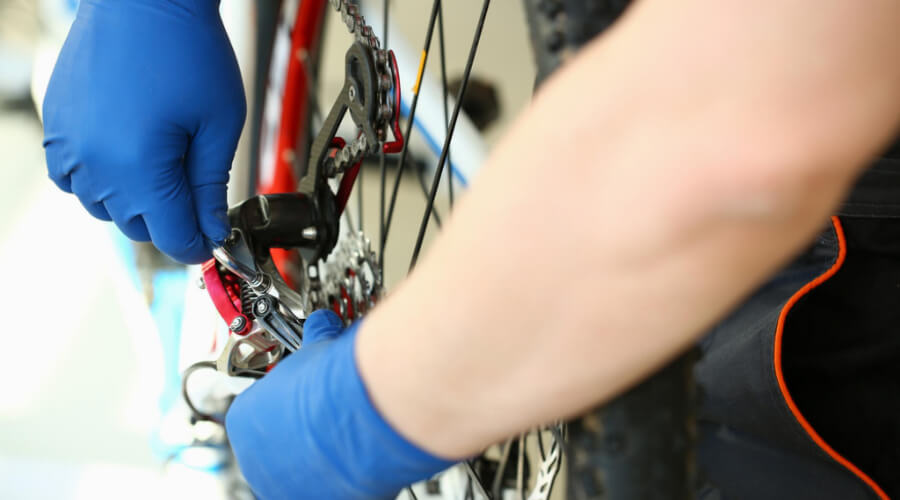For a bike to perform efficiently, sometimes it becomes necessary to replace tubes and tires. The replacement of these two essential components of the cycle calls for the removal of wheels, which are eventually replaced. The process of attaching bike wheels to an axle requires to be done with utmost care and precision, bearing in mind that the only thing separating you and the road are the two wheels. Messing up the wheel replacement task might lead to unpleasant incidents such as the wheel coming off while riding, misalignment of the wheels leading to poor braking, unpleasant gear shifting, and poor bike handling.
Does Bike Wheels Attachment To An Axle Require Special Tools And Skills?

Attaching bike wheels to an axle is a mechanical process that demands specific tools and skills. Wheel attachment skills are essential for riders, as a situation might arise when riding and running to a repair shop with minor issues such as tube and tire changing does not only dent your pocket but is also time-consuming. However, regardless you have the right skills, you can’t complete the task without a proper set of tools.
The processes of attaching the bike’s two wheels are slightly different, and it is essential to note that we have three different types of bike axles. Please stay on this page as we discuss all kinds of bike axles and guide you to attach wheels to them.
Types Of Axles
1. Quick Release Axles
The quick-release axles are almost obsolete, but some bikes still use them. Quick-release wheels are characterized with hollow axles measuring 9mm and 10mm diameter at the front and rear, respectively, with a 5mm diameter skewer that goes through it.
Previously, all road bikes used rim brakes, and they had front axles measuring 100mm wide, while rear axles measured 130mm wide. However, with the advent of disc brakes, the width of the rear axle increased to 135mm, while the front one maintained its width at 100mm.
2. Thru-Axles
Thru-Axles are the most used, more so on mountain bikes. The thru-axle system’s dropout has closed-off rounded openings that minimize falling out of wheels when riding. Safety is ensured by the axle that passes through the dropout on one end and screws into inbuilt threads in the other end’s dropout.
A front wheel thru-axle is standardized at a length of 100mm and width of 12mm, while rear thru-axles have a standard length of 142mm and a width of 12mm.
3. Road Boost Axles
Boost axles are prominently featured on some variants of mountain bikes, gravel bikes, and e-bikes. The boost front axle features a length of 110mm and a width of 12mm. whereas the rear axle is 148mm long and 12mm wide
One downside of boost wheels is that they don’t conform to standard frames.
This article will explain how to attach bike wheels to a thru-axle because they are the most used today.
Attaching Bike Wheels To A Thru-Axle

1. The Front-wheel
to install a front wheel to a thru-axle requires a systematic approach. This article simplifies the entire process by showing you a step-by-step guide to attaching bike wheels to a thru-axle.
2. Trace The Rotor
When installing a front bicycle wheel into the axle, ensure the disc pads are in position. It saves you a lot to ensure the rotor is perfectly aligned before slamming the wheel into place. If the rotor is misaligned when slamming home the wheel, there are chances your carrier spring will be mangled in the process.
3. Ensure The Wheel Is In Proper Position
When fitting a bike wheel to an axle, ensure that it is well seated and centered. The wheel hub axle ends must engage with the fork slots when the disc rotor goes into the caliper. A well-seated and centered wheel allows for easy passage of the axle through the hub.
4. Glide The Axle
Now that the wheel is in position and it is sitting correctly in the brake and dropouts, you are at liberty to slide in the axles. Axles usually are one-sided; hence they fit from the right-hand side, which features no disc. When fitting the axle, you might waggle a bit to locate the fork threads so that you screw the threaded end of the axle into the fork threads securely.
5. Ensure The Wheel Is Tight
Use the axle lever to pull together the fork legs, and use a little force to fold and close the lever. Now that your wheel is in place, wiggle it to ensure it is firmly in place, then spin it to ensure the rotor is running smoothly through the brake caliper.
2. Attaching the Rear Bike Wheel to an Axle
Unlike the front wheel, the rear wheel demands skills and concentration. It requires that you simultaneously align the chain on the sprocket and direct the disc rotor between brake pads while ensuring that the axle aligns with the frame dropouts.
1. Station the Chain and Sprocket
Ensure the top run of the chain is lined up properly and it sits on the smaller rear sprocket while the lower chain is supposed to run below the axle.
2. Fit the wheel
While guiding the axle with the aid of your fingers, gently fit the wheel and ensure it has a proper fit with the frame. The axle should squarely sit centrally in the frame, and the best indicator is the seat stays. If the tire is positioned centrally to the seat stays, you can insert the axle.
3. Glide Home The Axle And Screw It Into Place
Now that your wheel is in a proper position go ahead and insert the thru-axle, rotating it slowly as you push it through to ease the process of going through the hub. When your axle comes into contact with the other side’s dropout, ensure the lever is open and wind the lever to screw together the axle and the frame. Finally, tighten the axle and close the lever.
FAQ
Is Thru-Axle Superior?
The thru-axles are superior and widely used. They provide benefits such as enhanced steering and handling of the bike, excellent braking, and top-notch mechanical efficiency.
Conclusion
While bike axles come in different types, Thru-axles are responsible for the enhanced performance of most bikes. Knowing how to attach bike wheels to an axle is straightforward if you follow the above guidelines.

